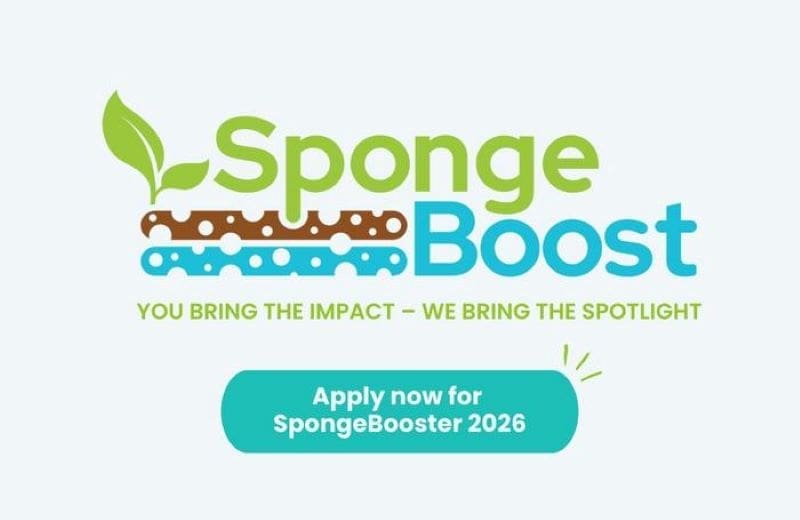‘SpongeBooster of the Year 2026’ award
The EU-funded SpongeBoost project invites both organisations and private individuals, aimed at restoring sponge landscapes across Europe, to apply for the ‘SpongeBooster of the Year 2026’ award. The winning project will receive recognition and visibility.
The Horizon Europe project SpongeBoost, aimed at promoting the natural sponge function of landscapes to improve their resilience to flood and drought events, is launching the next application round for the ‘SpongeBooster of the year’ award.
The initiative honours outstanding examples of sponge landscape restoration across Europe – projects that strengthen natural water retention, climate resilience, biodiversity, and community value. By highlighting inspiring work across the continent, the ‘SpongeBooster of the year’ award will provide visibility and the opportunity to motivate similar efforts.
The award is open to organisations and private individuals with projects implemented between January 2020 and December 2025, focusing on outdoor restoration and rewetting activities. Eligible initiatives include those in EU Member States, Switzerland, the United Kingdom, Norway, and the Balkan countries.
Applications for the ‘SpongeBooster of the year 2026’ award can be submitted via online form from 27 October to 30 November 2025.

“It is inspiring to see how dedicated people are working to restore our sponge landscapes. With this award, we want to bring such projects into the spotlight, and we hope that many more initiatives will seize the opportunity to share their achievements and strengthen their impact.” – Carina Darmstadt, Environmental Action Germany (DUH)
The renewed award call builds on the success of this year’s winning initiative, Planar e.V. (Germany), whose project along the River Diemel demonstrates what meaningful local action can achieve when cooperation, innovation, and nature-based solutions come together. Becoming a SpongeBooster has helped elevate the project beyond its local context. “’The SpongeBooster of the year’ award has become a genuine seal of approval for our work, opening doors and building the trust necessary for new collaborations. It has provided us with the confidence and visibility to move forward with our next phase of restoration projects.” – Jens Eligehausen, Planar e.V.
Planar e.V. revitalised 1.1 kilometres of the River Diemel, restoring natural river structures, reconnecting 20 hectares of floodplain, and improving habitat quality for over 65 species – including several endangered ones. The project was conducted with strong engagement of volunteers and regional partners, resulting in measurable ecological outcomes and enhanced recreational value for the community.
By showcasing exemplary initiatives such as Planar e.V., the ‘The SpongeBooster of the year’ aims to provide both inspiration and practical knowledge for regions facing similar land and water challenges.
***
SpongeBoost receives funding from the European Union’s Horizon Europe research and innovation programme under grant agreement No.101112906.
Views and opinions expressed are those of the author(s) only and do not necessarily reflect those of the European Union or the European Climate, Infrastructure and Environment Executive Agency (CINEA). Neither the EU nor the European Climate, Infrastructure and Environment Executive Agency (CINEA) can be held responsible for them.
Article Source:
Press Release/Material by Pensoft Publishers
Featured image credit: wirestock | Freepik




